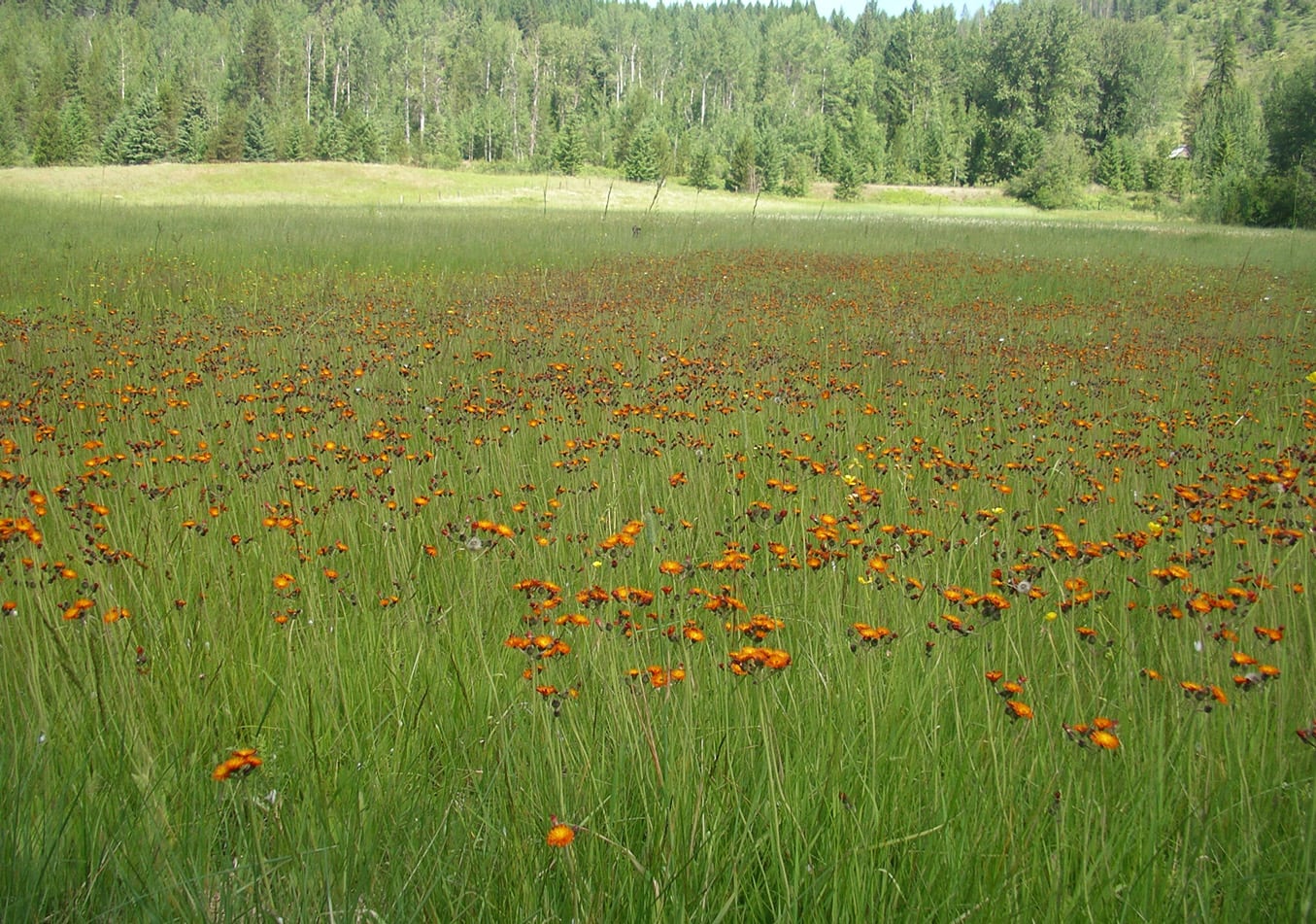Invasive Species — Orange hawkweed now in full flower
Orange hawkweed (Hieracium aurantiacum) is a native of central and southern Europe. It is widely grown as an ornamental in gardens and then escapes. It is often spread by recreationists, pack animals, hay and gardeners sharing with friends. It is also found as a contaminant in bird seed and wildflower seed mixes. Some native alternatives to orange hawkweed are alpine aster, heart-leaved arnica and blanket flower.
Orange hawkweed is a perennial plant that is easy to identify. It has bright reddish orange flowers that are 1-2.5cm in diameter. The stems may reach a height of 60cm and have 2-25 flower heads per stem. The stem is usually leafless although it may sometimes have one or two small leaves on it. The stem and leaves are covered with short, stiff, blackish coloured hairs.
It has a basal rosette of elliptical shaped leaves that are 5-20 cm long and 1-3cm wide. It is has a shallow fibrous root system. It spreads by seed, stolons and shallow rhizomes. The flowers usually appear in late May or June but can flower later in the summer as well. The flowers can go to seed within two hours of being picked. Stems and leaves exude a milky latex when cut or broken. Seeds are tiny and plumed.
Hawkweeds are aggressive competitors. Orange hawkweed will grow pretty much everywhere. It is often found in meadows, grasslands, rangelands, pastures, roadsides, cemeteries, and lawns. Please do not share this plant with anyone. It is very difficult to get rid of and spreads really fast. When selective herbicides are applied in the spring and followed with nitrogen fertiliser, grass competition can keep this weed suppressed. If you dig it out be sure that you get all of the roots because if you leave even a tiny bit of root in the soil it may develop into a whole new plant. Reseed after digging out invasive plants to create competition for the seed that is banked in the soil.
Be sure to double bag the plant including the dirt attached to the roots and take it to the landfill. There is no charge to take invasive plants to the landfill in our Regional District. Mowing causes more hawkweed to grow by stimulating it to put out above ground runners and shoots from the roots so don’t use mowing as a form of control.
For more information contact the Boundary Invasive Species Society on Facebook and 250-446-2232.
Jen Haynes is the Education Coordinator for the Boundary Invasive Species Society.






















